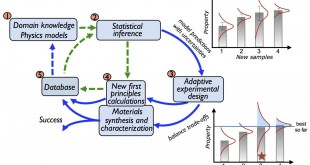In a groundbreaking stride towards sustainable energy solutions, a team of MIT engineers has harnessed the power of ancient materials to create a revolutionary supercapacitor. MIT engineers have developed a groundbreaking supercapacitor using a combination of ancient and abundant materials – cement, water, and carbon black. This innovative device holds immense potential for revolutionizing energy storage, offering a cost-effective and sustainable alternative to conventional batteries.
Ancient Materials, Modern Solutions
At the heart of this breakthrough are two historically ubiquitous materials — cement and carbon black, a substance resembling finely powdered charcoal. MIT engineers combined these materials with water to craft a supercapacitor, a sophisticated alternative to conventional batteries.
The key to this breakthrough lies in utilizing cement, a material with a well-established history in construction, in an entirely new context. By incorporating carbon black, a highly conductive material, into the cement mixture, the MIT team has created a material with an exceptionally high internal surface area. This enhanced surface area is crucial for maximizing the device’s energy storage capacity.
This creation presents a potential game-changer in storing electrical energy, especially from intermittent sources like solar and wind power.
The Capacitor Core: How It Works
Capacitors are elegantly simple devices, comprising two electrically conductive plates separated by an electrolyte and a membrane. When a voltage is applied, charged ions accumulate on the plates, creating an electric field. The MIT team took this concept to a new level by developing a cement-based material with an extraordinarily high internal surface area. This was achieved by introducing carbon black, a highly conductive substance, into a concrete mixture along with cement powder and water.
Since the membrane in between the plates blocks charged ions from migrating across, this separation of charges creates an electric field between the plates, and the capacitor becomes charged. The two plates can maintain this pair of charges for a long time and then deliver them very quickly when needed. Supercapacitors are simply capacitors that can store exceptionally large charges.
The amount of power a capacitor can store depends on the total surface area of its conductive plates. The key to the new supercapacitors developed by this team comes from a method of producing a cement-based material with an extremely high internal surface area due to a dense, interconnected network of conductive material within its bulk volume.
As the cement mixture cured, the water created a branching network of openings within the structure, and carbon migrated into these spaces, forming wire-like structures. These structures have a fractal-like structure, with larger branches sprouting smaller branches, and those sprouting even smaller branchlets, and so on, ending up with an extremely large surface area within the confines of a relatively small volume.
Soaking the material in an electrolyte, such as potassium chloride, resulted in two electrodes separated by a thin space, creating a potent supercapacitor.
During the setting and curing of the mixture, water is gradually absorbed through cement hydration reactions. This process significantly impacts carbon nanoparticles as they are inherently hydrophobic, repelling water. As the mixture undergoes evolution, carbon black autonomously organizes itself into a connected conductive wire structure. This self-assembling process is easily replicable, utilizing materials that are both inexpensive and globally accessible. Remarkably, only a small amount of carbon, as little as 3 percent by volume in the mix, is required to establish a permeating carbon network, making the process resource-efficient and cost-effective.
Unparalleled Advantages
Supercapacitors, unlike batteries, rely on electrostatic energy storage, enabling them to charge and discharge much faster. This rapid charging and discharging capability makes them ideal for applications that require high-power bursts of energy, such as electric vehicles and renewable energy storage systems.
Moreover, the use of cement, a readily available and inexpensive material, significantly reduces the production cost of these supercapacitors compared to conventional batteries. This cost-effectiveness, coupled with their exceptional performance, makes them a compelling solution for large-scale energy storage applications.
Sustainable, Scalable, and Cost-Effective
One of the remarkable aspects of this technology is its sustainability and scalability.
The environmental impact of energy storage is a critical consideration, and this new supercapacitor technology addresses this concern significantly. The use of cement and carbon black, both abundant and non-toxic materials, reduces the environmental footprint of the device’s production.
Cement, one of the most widely used human-made materials, combined with a small percentage of carbon black, offers a conductive nanocomposite. The production process is reproducible, cost-effective, and the materials involved are readily available globally.
Furthermore, the supercapacitor’s extended lifespan, along with its ability to withstand numerous charge-discharge cycles, minimizes the need for frequent replacements, reducing waste and environmental impact.
The scalability of the system is impressive, ranging from thin electrodes suitable for rapid charging to thicker ones capable of storing energy for an entire house. The potential applications extend to remote locations, providing energy solutions for isolated homes or structures far from conventional power grids.
Applications Beyond Boundaries
The versatility of this technology is awe-inspiring. MIT researchers envision integrating these supercapacitors into the very foundations of buildings, acting as a reservoir for a day’s worth of energy generated from solar panels or windmills. This means houses could efficiently store and utilize energy when needed, without compromising structural strength.
Moreover, the researchers visualize the construction of concrete roadways embedded with these supercapacitors, providing a contactless recharging infrastructure for electric vehicles. Imagine a future where highways not only facilitate transportation but also store and supply energy seamlessly.
Looking Towards the Future
MIT’s carbon-cement supercapacitors represent a leap towards large-scale, inexpensive energy storage. With the growing demand for emissions-free energy, especially from variable sources like wind, solar, and tidal power, this technology could be a game-changer. Unlike traditional batteries relying on limited materials like lithium, this technology harnesses the ubiquity of cement.
The development of this supercapacitor using ancient materials represents a significant milestone in the quest for sustainable and efficient energy storage solutions. Its ability to store large amounts of energy, charge and discharge rapidly, and do so at a lower cost and with reduced environmental impact makes it a promising candidate for revolutionizing the energy landscape.
As we venture further into the era of renewable energy dominance, MIT’s innovative solution stands as a testament to the power of combining ancient wisdom with cutting-edge technology. The prospect of supercapacitors integrated into our homes, roadways, and infrastructure opens new doors to a sustainable and energy-efficient future. The journey towards a greener planet takes a monumental step with MIT’s supercapacitor made from ancient materials.
 International Defense Security & Technology Your trusted Source for News, Research and Analysis
International Defense Security & Technology Your trusted Source for News, Research and Analysis

